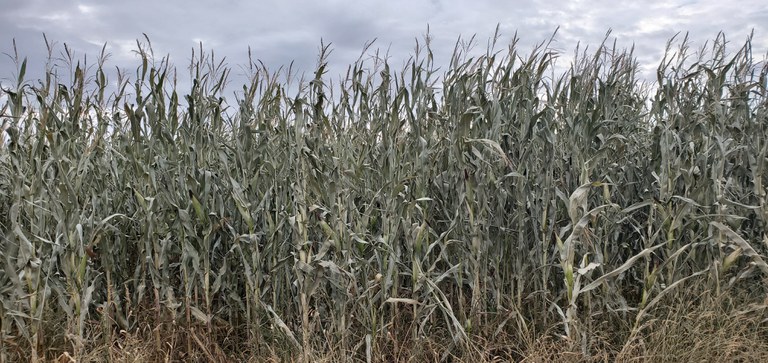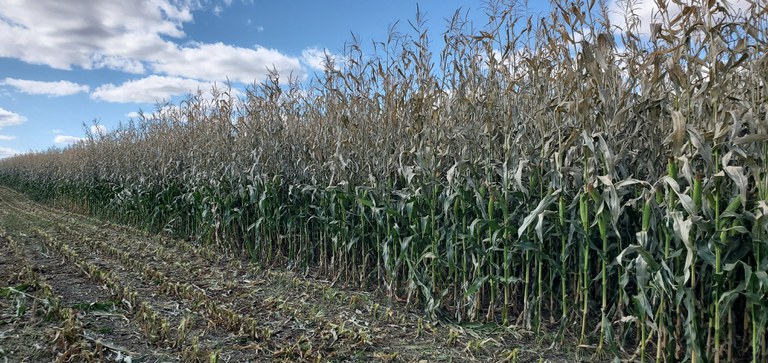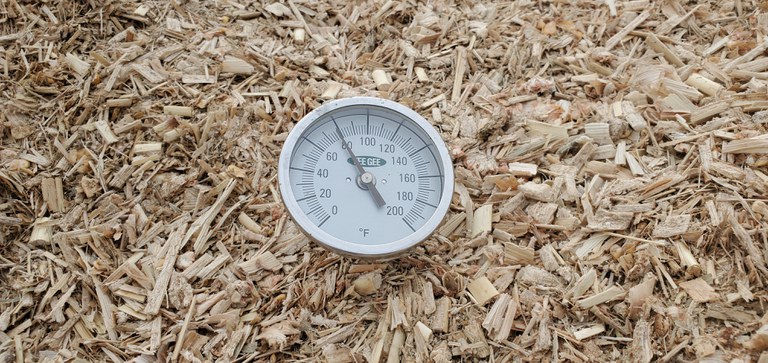Corn Silage 2020
Frost came early in September 2020 and many producers are wondering about silage quality.
Traditionally, frost signals the beginning of corn-chopping season. After the frost, the plants begin to lose moisture. When the corn plant reaches 63-68 percent moisture, optimal for the ensiling process, harvest begins.
This year, most corn plants were still maturing when an early frost nipped most of North Dakota. When the intent is to harvest corn for silage, producers plant a later-maturing corn variety to take advantage of higher tonnage yields. These plants were wet and seemed to have held their moisture after the frost. But appearances are deceiving; while the corn leaves lost color and dried out, the rest of plant hadn’t quickly lost moisture. Silage piles around the Carrington area were made at 62-67% moisture two weeks after the frost.
Consider that corn leaves are only a small percentage of the weight in a corn plant. Most of the corn plant weight is in the grain, cob, and stalk. While leaves contribute some feed value to the corn silage pile, most of the silage volume is from the rest of the plant.
 Frosted late-season corn didn’t reach maturity
Frosted late-season corn didn’t reach maturity
Silage yields are reportedly lower this year that previous years. This could be due to the frost and the subsequent early harvest. Some fields were already drying down prior to the frost due to a lack of ground moisture. Other fields were only partially damaged by the frost and only the upper part of the plant was damaged.
 Frost damage stopped just above the ear in a field near the Canadian border
Frost damage stopped just above the ear in a field near the Canadian border
Making good silage starts with sufficient moisture. When chopped too wet (greater than 68% moisture) horizontal silage piles may seep moisture. If corn is chopped at more than 80% moisture, improper fermentation will occur and a rancid smell may develop. When chopped too dry (less than 60% moisture), the silage pile will ferment but never reach a stable acidic pH. In 62-68% moisture silage, microbes stop growing when enough acid is produced during fermentation. This stabilizes the silage for future use.
Silage that is put up too dry continues to ferment through the feeding season. It will be warm, develops a brown color, and has a caramel scent. Continued microbial heating causes nutrient loss from the silage pile. While cattle may eagerly consume drier silage, nutrient loss and spoilage is greater than in a properly-preserved 62-68% moisture silage.
Inoculants can help stimulate the fermentation process. These are aggressive microbes that quickly drop silage pH. Covering a silage pile with plastic to reduce moisture loss will reduce spoilage.
 Good fermentation will have lower silage pile temperatures. This picture was taken five days after chopping. The internal temperature is already dropping indicating good fermentation.
Good fermentation will have lower silage pile temperatures. This picture was taken five days after chopping. The internal temperature is already dropping indicating good fermentation.
Karl Hoppe, Ph. D.
Karl.Hoppe@ndsu.edu
Extension Livestock Systems Specialist


